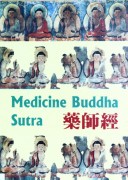The Way It Is
CONTENTS
Introduction 7
‘…Happiness forever’ 12
Investigating the mind 15
Everything that arises passes away 22
The five khandhas 31
‘…All the time in the work’ 41
Precepts 42
‘The way it is’ 49
The raft 52
Patience 59
Accepting the way things are 64
Consciousness and sensitivity 68
The sound of silence 75
Only one breath 78
Stillness and response 86
Turning towards emptiness 94
Beyond belief 101
Being nobody 107
Non-dualism 115
Dependent origination:
Ignorance is the self-view 120
Momentary arising 127
The formations of self 132
Feeling conditions desire 139
Letting go of desire 148
The shining-through of the divine 157
A time to love 167
Photographs
Venerable Ajahn Sumedho, by John Johns 6
Bhikkhu meditating outside his kuti, by John Johns 14
Anagarikas at their ordination ceremony 30
Bhikkhus making their robes 40
Circumambulation at Ratanagiri Vihara, by Ron Livingstone 48
Venerable Ajahn Chah at Manjusri Institute, by Thubten Yeshe 58
Siladhara drying the lid of her alms bowl by John Baxter 62
Hammer Wood, Cittaviveka Vihara, Chithurst, by Derek Gardiner 74
Anagarika at evening chanting, by Dick Todd 92
Siladharas in Hammer Wood, Chithurst, by Mike Holmes
Formal offering to Tan Chao Khun Paririananda 100
Amaravati, by Jeff Pick 114
Anagarika washing up, by Jeff Pick 126
Bhikkhu sawing logs 138
Bhikkhu sweeping leaves, Wat Pah Nanachat, Thailand, by Ping Amranand 156
Receiving alms food on a festival day, Amaravati 166
Stupa in the snow, Amaravati 176
Calligraphy: John Swain
Book design: Chris Millett Ven. Sucitto Karl Maslin
INTRODUCTION
This book contains a collection of teachings of Ajahn Sumedho given to people who are familiar with the conventions of Theravada Buddhism and have some experience of meditation. Most of the chapters are edited from talks either given during retreats for lay people or for Ajahn Sumedho’s monastic (ordained) disciples, so they require some careful attention and are best read in sequence.
In the two – month monastic retreats Ajahn Sumedho develops a theme from the Buddha’s teaching, linking it to other aspects of the Dhamma, embellishing it with accounts of his personal experiences, demonstrating its relevance to the society in general, or using it as an exhortation to the Sangha to live up to their aspiration of enlightenment. Although it is not possible to render the tonal depth and variety of these talks in a printed work, the mixture of short exhortations and pointers, and longer contemplative reflections mingled with the chants that the monks and nuns have been reciting daily for years may suggest the atmosphere and scope within which the teachings are offered.
In many of these talks Ajahn Sumedho expounds on the uniquely Buddhist expression of ‘not-self’ (anatta). He maintains this to be the Buddha’s way of pointing to the experience of Ultimate Reality that is the goal of many religions. During the monastic retreats, Ajahn Sumedho frequently teaches Dependent Origination (paticcasamuppada) based on the approach of anatta. The Dependent Origination traces the process whereby suffering (dukkha) is compounded out of ignorance (avijja) and, conversely, suffering is eliminated (or rather not created) with the cessation of ignorance. Just as anatta – not-self – is the expression of Ultimate Truth, Ajahn Sumedho suggests that the root of ignorance is the illusion of ‘Self’. He is trying not to annihilate or reject personal qualities but rather to point out how suffering (dukkha) arises through attempting to sustain an identity denoted by body and mind.
This mistaken identity is what the average person calls ‘myself’. It can be detected in a latent state as self-consciousness, as a habitual mood of the mind such as conceit or self-criticism, or it can manifest as selfish bodily or verbal activity. The profundity of Dependent Origination is that it describes how, even at its most passive, such wrong view creates habitual drives (kamma) and attitudes through which even a silent and well-intentioned meditator experiences suffering. Kamma ranges from the ‘internal’, psychological plane to the ‘outer’ realm of action. This habitual process then manifests in terms of body, speech or mind; all such manifestations being termed sankhara. Even moral action based on ‘self-view’ can lead to anxiety, doubt, ‘sorrow, grief, pain, lamentation and despair’. Such is the meaning of the first ‘link’ of Dependent Origination ‘avijja paccaya sankhara’ or ‘dependent on ignorance are kammic formations’.
In its most complete formulation, Dependent Origination is expressed as:
‘avijjapaccaya sankhara; sankharapaccaya. vinnanam; vinnanapac’ cay a namarupam; namarupapaccaya salayatanam; salayatanapaccaya phasso; phassapaccaya vedana; vedanapaccaya tanha; tanhapaccaya upadanam; upadanapaccaya bhavo; bhavapaccaya jati; jatipaccaya jaramaranam-soka-parideva’dukkha- domanassupayasa sambhavanti, evametassa kevalassa dukkhakhandhassa samudayo hoti.’
This deals with arising of dukkha.
The cessation of dukkha is then mapped out:
‘avijjayatveva asesaviraga-nirodha sankharanirodho; sankharani- rodha vinfiananirodho; vinnanamrodha namarupamrodho; namarupani- rodha salayatananirodho; salayatananirodha phassanirodho; phassani- rodha vedananirodho; vedananirodha tanhanirodho; tanhanirodha upadananirodho; upadananirodha bhavanirodho; bhavanirodha jatini- rodho; jatinirodha jaramaranam’Soka’parideva-dukkha-domanass- upayasa nirujjhanti; evametassa kevalassa dukkhakhandhassa nirodho hoti’.
In English this can be translated as:
Dependent on ignorance are habitual formations; dependent on habitual (kamma-) formations is consciousness; dependent on consciousness are name-and-form (mentality-corporeality); dependent on name-and-form are the six sense-bases; dependent on the six sense bases is contact; dependent on contact is feeling; dependent on feeling is desire; dependent on desire is grasping; dependent on grasping is becoming; dependent on becoming is birth; dependent on birth is old age, sickness and death, sorrow, grief, lamentation, pain and despair.
Through the entire ceasing of this ignorance, habitual formations cease; through the ceasing of habitual formations, consciousness ceases; through the ceasing of consciousness, name-and – form cease; through the ceasing of name-and-form, the six sense – bases cease; through the ceasing of the six sense bases, contact ceases; through the ceasing of contact, feeling ceases; through the ceasing of feeling, desire ceases; through the ceasing of desire, grasping ceases; through the ceasing of grasping, becoming ceases; through the ceasing of becoming, birth ceases; through the ceasing of birth, old age, sickness and death, sorrow, lamentation, pain, grief and despair come to cease. Thus is the ceasing of this whole mass of suffering.
There are many forms of dependence that are concerned in this analysis. It is helpful to remember that paccaya ‘dependent on’ or ‘conditions’ does not necessarily mean ‘creates’. For example, one could say ‘walking is dependent on legs’, or ‘ice is dependent on-water’,, or ‘catching the train is dependent on getting to the station at the right time’, or even ‘the view is dependent on the non-appearance of intervening objects’. Understanding this, the contemplative begins to realise that just as ‘arising dependence’, need not mean ‘creation’, the ‘cessation’, so valued by the Buddha need not mean ‘annihilation’. In this lifetime, where Nibbana is to be realised, mentality-corporeality can ‘cease’ – i.e. the identification with physical and mental kamma-formations can cease so that life is no longer lived from the pleasure/pain principle dictated by the senses. (nama~rupa~salayatana~phassarvedana~tanha). In this spirit, one could interpret the sequence in a more fluid way, for example:
To the extent to which (paccaya) the mind has not comprehended (avijja) Truth, habitual drives (sankhara) manifest and condition (paccaya) awareness into a discriminative mode (vinnana) that operates in terms of (paccaya) subject and object (nama-rupa) held (paccaya) to exist on either side of the six sense-doors (salayatana) .
These sense’doors open dependent (paccaya) on contact (phassa) that can arouse (paccaya) varying degrees of feeling (vedana). Feeling stimulates (paccaya) desire (tanha) and, according to (paccaya) the power of desire, attention lingers (upadana) and so personal aims and obsessions develop (bhava) to give (paccaya) rise (jati) to self-consciousness. That self-consciousness, mental or physical, once arisen must follow (paccaya) the cycle of maturing and passing away (jara-maranam) with the resultant sense of sadness (soka) varying from sorrow (parideva) to depression (domanassa), to anguish (dukkha) and emotional breakdown (upayasa).
When the mind looks into the sense of loss and comprehends Truth (avijja-nirodha), habitual-drives cease (sankhara-nirodha) and the awareness is no longer bound by their discrimination (vinnna-nirodha); so that the separation of the subject and object is no longer held (nama~rupa~nirodha) and one does not feel trapped behind or pulled out through the six sense-doors (salayatana~nirodha). The sense-doors open for reflection, rather than being dependent on contact (phassa~nirodha) and impingement does not impress itself into the mind (vedana~nirodha). So there is freedom from desire (tanha-nirodha) and attention does not get stuck (upadana-nirodha) and grow into selfish motivations (bhava-nirodha) that center around and reinforce the ego (jati-nirodha). When no personal image is created, it can never bloat up, nor can it be destroyed (jara~maranam~nirodha). So there is nothing to lose, a sense of gladness, uplift, joy and serenity (soka~parideva~dukkha~domanass~ upayasa~nirodha).
With the cessation of such a death-bound frame of reference there is the living of the True life, the Holy life, of which Ajahn Sumedho so evocatively speaks.
Although many of these talks were delivered to monastics, the beauty of the Dhamma is that it is available to those who wish to listen. It is with this in mind that this book is freely offered.
May all beings realise Truth,
Ven. Sucitto Bhikkhu,
Amaravati 1990
 Facebook
Facebook
 Google
Google
 Google+
Google+


















